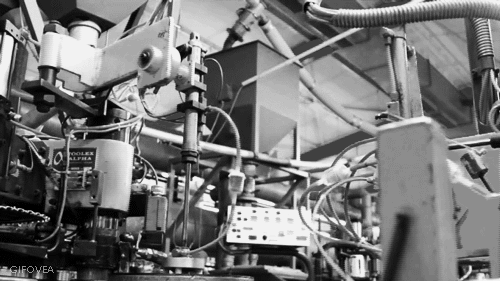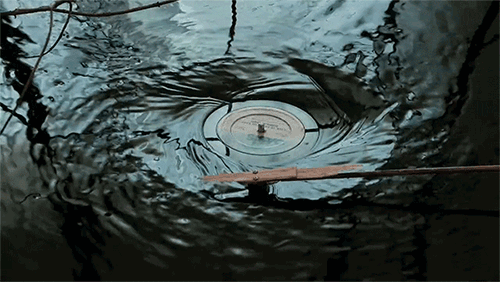-
Posts
1750 -
Joined
-
Last visited
Content Type
Forums
Events
Gallery
Posts posted by boom3
-
-
-
-
-
-
(Not reply to Chris's post about Art Dudley and Jeff Bagby; my condolences to their families and friends.)
Since this thread keeps going on and on, I finally decided to speak up and post my question about that review. The review uncovered some significant resonances in the front panel, which should be the place most prone to resonance, since it is the outer wall of the highest-pressure section of the bass horn. What I haven't seen (maybe I missed it) is any comment from Roy. One would think that of all panels this would be the most heavily braced. If memory serves, the central brace was not added to the back of the front panel until the 70s; if I'm off a decade I won't be embarrassed. Maybe, like a lot of things that show up in measurements, it is deemed to have no audible significance?
-
-
-
-
-
-
-
Hmmm, a lot of variables in that topic. There were a few 60s/70s speakers (maybe an EV?) with a tweeter on the rear but the idea never caught on since most customers wanted to tuck the boxes up against the wall or in a bookcase. The spacing from the speaker to the wall becomes more critical in that the "correct" distance for the "ambient tweeter" may be the wrong distance for optimum bass response. I'd rather spend the max I could afford on a good front mounted tweeter than divide the budget in half for two mediocre units.
-
is the bias the same on both output tubes on each side?
-
Grew up with classical and 30s/40s jazz in the record cabinet. My bro had the first couple of Dylan and Baez albums which got me interested popular music.
-
Tempered glass gets brittle as it ages. This happened to me as I was lifting a warm tumbler out of dishwasher with wet hands. Fortunately all the glass was contained in the DW and I was able to vacuum it all out before I ran it again. A cautionary note: this was a "Picardie" or "Bistro" tumbler, which just about everyone has/does own; they are especially prone to this as they get old and may develop sharp cracks right at the lip. I always check them carefully before using, especially if they are more than 5 yrs old. A buddy (owner of the DW, BTW) also had two outdoor coffee tables shatter like that, found them in pieces when he came home from work.
-
I will give my pro-rated share to friend who is/was a cook in New Orleans.
-
 1
1
-
-
This is a colossal error of jurisprudence. PG&E needs that money to secure its infrastructure, and as we all know, the lawyers will get the lion's share and the victims of the fires will get crumbs.
I have driven the hill country of CA many times, and marveled at how the electrical grid was installed in that terrain. It will take a massive, ongoing effort to send people out to those transmission towers and substations and keep the brush trimmed back and the switchgear in good working order. Yep, PG&E was negligent, but I doubt any electric utility in the US is any better. A better verdict would be to give the victims direct one-time payments (not via class action "settlement" that mainly benefits lawyers) and force PG&E to spend more money on housekeeping.
-
On 3/18/2020 at 8:31 PM, Edgar said:
Someone told me a long time ago that more heat is shed by the resistor leads than by the resistor body. If true, then the one longer lead on a stand-up resistor mount makes sense.
Since the leads are metal and the body is ceramic or metal coated with enamel, that also makes sense. I would be surprised though if any low-level, signal-path resistors get appreciably warm, that suggests that they are undersized for the current.
A very long time ago, I watched one of my profs open up a Tektronix o-scope, one of those the size of a studio TV camera. The signal-level components were almost all mounted on long ceramic pans with lead pads on either side. Makes for a more complicated wiring harness, but it looks very neat and easy to troubleshoot. Being used to the under chassis "rats nest" typical radio & TV construction, I was in awe. Some British gear did/does this as well.
-
5 hours ago, ClaudeJ1 said:
Yes, mechanical stability is the key. I used to manage the Honda Design group where we did a "build to print" for Honda Accord Electronics. The Japanese insisted o Single Sided boards with stand up resistors (which were Axial Leaded resistors that had one lead bent 180 degrees that required us to invest in Universal Radial Lead Insertion equipment for their specific line in the plant). The bummer was that the meeting I attended at Universal Instruments HQ in New York state, was literally 100 feet away from McIntosh HQ in Conklin..........so close, yet so far away......LOL.
This is why the "minimum etch/maxium copper" method of PCB design is used on Single Sided boards, since the "rivet effect" of plated holes of a double sided board is absent and there is full reliance on just the copper's adhesive (surface area driven) for mechanical robustness. In the same manner, 4 leads are more stable than just 2 on radial components.
Stand up axial resistors? Have not seen those since 6-transistor pocket radios of the 60s. I'd think they would be more fragile than having the axials just lay on the board with the lads going to the pads.
-
When I had a Pioneer SX-1250, my old cat liked to lay on it because it got toasty warm even at idle. Every year or so I took the case off and cleaned out the cat hair that created shorts between the outputs
-
I don't see dates on those reviews, so, are they reviews when the gear was new, or are they reviewing old gear, or NOS, or what?
-
8 hours ago, Dave A said:8 hours ago, Dave A said:22 hours ago, boom3 said:
The four lead box looks good for a PCB based crossover.
OK could you tell me what that means?
Printed Circuit Board. A four lead component can be mechanically more stable. The WIMA box caps are indeed very good and very popular with rebuilders of vintage guitar amps to replace Orange Drops, Black Beauties and the like
-
 1
1
-
-
I'm glad to see someone else take up the resistance (!) to the bypassing chimera. It's a legitimate concept from RF work that got cross-walked into POOGE when good film caps were scarce and expensive to hobbyists, and then got a life of its own. Replacing electrolytics in the signal path with good quality film caps does make a diff, but then the improvement hits a brick wall as the rest of the circuit, stacked component tolerances, the listening room, etc swamp out any measurable gains in quality..
The only legit audio frequency/speaker impedance bypass I know is using a cap to bypass a tweeter attenuator, to compensate for falling tweeter response. I'm using that on an attenuator for a Great Heil, and it not only flattens out the last octave but reduces the bobbles in the 5-10 KHz (9th octave) range as well.
-
 1
1
-
-
Can't speak to audible superiority, but I used WIMAs to re-cap my Corns. The four lead box looks good for a PCB based crossover.














Show us your great photography thread!
in Lounge
Posted
New Orleans, from the 15th floor of an office building in the central business district, the Crescent City Connection (CCC) bridges in the distance.